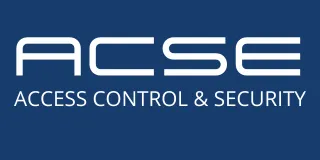
Emergency Access and Code Compliance: What Every Business and HOA Should Know
Installing an automated gate system is a strategic decision for improving security, controlling traffic, and enhancing the value of a property. However, for businesses, gated communities, and HOAs (Homeowners Associations), one critical consideration is often underestimated: ensuring reliable emergency access and full compliance with applicable codes and standards.
Whether it’s a fire truck requiring urgent entry or a first responder addressing a medical emergency, your gate system must never become a barrier. Additionally, failing to meet legal and code compliance requirements can result in costly penalties, enforcement actions, or worse—delays that put lives at risk.
This article outlines the most important aspects of emergency access planning and code compliance that every property owner, manager, or security consultant should evaluate before designing or approving a gate system.
Why Emergency Access Must Be a Priority
In emergency situations, response time is everything. A gate that obstructs access—whether due to design flaws, lack of override mechanisms, or power failure—can endanger lives, property, and the credibility of those responsible.
Owners and HOAs must ensure that:
Emergency responders can access the site quickly and reliably.
Gates do not act as barriers to fire, police, or medical vehicles.
Systems remain functional even during power outages or technical failures.
In addition to the ethical and safety responsibilities, non-compliance with access requirements often violates fire safety codes and national standards.
Key Codes and Standards to Understand
Several standards and regulations impact gate system design and emergency access integration. The most important include:
UL 325 – Standard for Gate Operators
Requires entrapment protection mechanisms.
Mandates manual release features in case of power failure.
Requires appropriate integration of safety sensors and emergency override capabilities.
ASTM F2200 – Gate Construction Standard
Defines specifications for gate structure and physical safety.
Includes guidance on eliminating pinch points and minimizing entrapment risks.
Addresses minimum clearance, structural integrity, and movement tolerances.
NFPA Fire Access Requirements
Specifies access requirements for fire department vehicles.
May require aerial access in certain commercial or multi-family zones.
Addresses minimum road widths, vertical clearances, and gate reliability.
Local and Municipal Fire Codes
Often include additional mandates regarding emergency override devices.
May require approval from the fire marshal before system commissioning.
Specify turning radii, clearance zones, and accessibility standards.
Common Emergency Access Devices
Most properties will need to integrate one or more of the following to comply with emergency access standards:
Key Switches: Allow emergency personnel to open the gate manually using a secure access key.
Knox Boxes: Secure containers holding gate keys or remotes, accessible only to authorized responders.
Strobe Light Sensors: Detect the flashing lights of emergency vehicles and trigger gate operation.
Siren-Activated Sensors: Respond to specific frequencies from emergency vehicle sirens.
Radio-Controlled Receivers: Respond to radio frequencies used by emergency services.
Fire Access Loops: Inductive loops installed in the ground that open gates when driven over by emergency vehicles.
These systems must be registered with local fire authorities and tested regularly to ensure functionality.
Design Guidelines for Code-Compliant Emergency Access
Designing a gate system with emergency access in mind requires foresight, proper equipment, and familiarity with legal standards. Key design elements include:
Turnaround Space
Ensure emergency vehicles have space to enter and exit without reversing.
In cul-de-sacs or dead ends, incorporate hammerhead or loop designs.
Consult NFPA and local codes for minimum turning radii.
Minimum Clearances
Gate width should accommodate fire trucks and other large vehicles.
Recommended minimum is 12 to 20 feet for two-way traffic.
Vertical clearance should be at least 13.5 feet.
Ensure no overhanging branches or obstructions.
Battery Backup and Fail-Safe Design
Install systems that default to open or allow quick manual override.
Include battery backups to maintain operability during outages.
Signage and clearly marked access instructions must be present.
Common Mistakes and How to Avoid Them
Non-compliance with emergency access standards can result in:
Lack of emergency override systems.
Gates that remain closed during power outages.
Narrow entries that block emergency vehicles.
Unclear or missing signage for responders.
Manual release mechanisms that are hard to reach or damaged.
No communication with local fire departments during installation.
How to Prevent These Issues
Work with certified integrators like ACSE from the planning stage.
Conduct a formal compliance review of your site layout.
Engage local fire officials early in the process.
Schedule periodic testing and routine maintenance.
Keep emergency access devices visible, labeled, and functional.
Legal and Liability Considerations
The legal implications of poor emergency access planning are significant:
Municipal fines or stop-work orders for code violations.
Delays in emergency response leading to injuries or fatalities.
Insurance claim denials due to non-compliance.
Legal liability for damages if gate failure obstructs emergency access.
Gate systems that ignore safety and compliance standards pose serious risks to people and organizations. Responsible planning protects everyone.
How ACSE Ensures Emergency Access Compliance
At ACSE, we understand that gate automation is about more than convenience—it’s about safety, legal responsibility, and community trust.
Our certified team:
Designs all gate systems in accordance with UL 325 and ASTM F2200.
Integrates tested and approved emergency access technologies.
Coordinates with local fire marshals and permitting agencies.
Provides documentation for compliance and insurance purposes.
Offers routine testing and maintenance plans to maintain long-term functionality.
We help businesses, HOAs, and institutions build secure environments that are accessible when it matters most.
Summary
Emergency access is not optional—it is an essential part of any safe and legally compliant automated gate system. Whether you're securing a business park or a residential community, ensuring fast, reliable access for emergency services is both a regulatory obligation and a moral one.
Design with foresight. Install with expertise. Maintain with consistency. ACSE is your partner in doing it right the first time.

